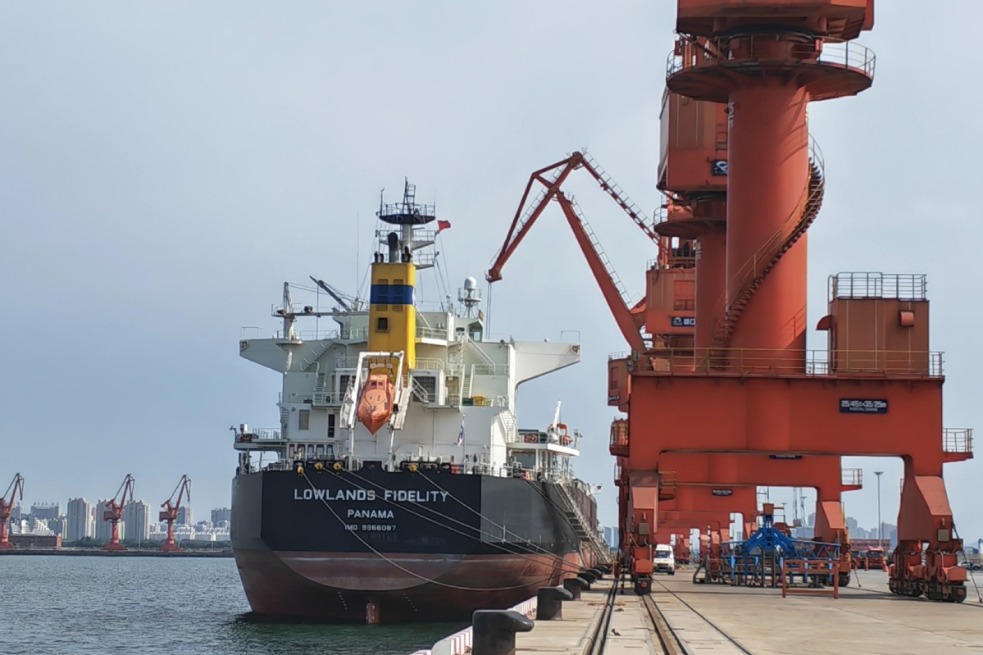Connectivity a boon for all the disparate dots on the map


"If a remote village wants to be prosperous, it should build roads first." This well-known phrase still resonates today in the country's quest for high-quality development.
The government's focus now is on further expanding and modernizing the country's vast transport network, and improving its management and efficiency. Over the 14th Five-Year Plan period (2021-25), China has woven an integrated and multidimensional transport network, making sweeping progress that has enhanced connectivity and underpinned economic growth.
By the end of 2024, six out of the 17 major transport targets set out in the plan had been achieved ahead of schedule, and the remaining targets are expected to be achieved by the end of this year, Minister of Transport Liu Wei told a news conference on Monday.
The five-year plan model provides the country's transport departments at various levels with a reliable framework to plan, implement and review their work and dock it with the work of other departments related to finance, the economy, trade, industry, rural development and technology. The coordination between different departments, under the leadership of the central authorities, a defining characteristic of Chinese governance, aligns the development of the country's transport network with the needs of other sectors.
From 2021 to 2024, fixed-asset investment in transport totaled 15.2 trillion yuan ($2.1 trillion), a 23.3 percent increase from the previous cycle. The Chinese government regards the input in transport infrastructure as an investment in the country's long-term development. Although it might seem a huge input at first, every yuan will pay off in the future in the form of enhanced economic efficiency, population mobility and logistics operation.
Over the past decades, the expansion and upgrading of China's transport networks have evolved into vital arteries powering the country's modernization.
Improved transport and logistics are also enhancing access to the country's rural and less-developed areas, bringing services, markets and new opportunities within reach and playing an important role in filling the development gap between regions in the vast country.
As of the end of 2024, the total length of rural roads had reached 4.64 million kilometers and over 30,000 townships and 500,000 villages had been connected by paved roads. Rural roads are fueling the growth of new industries and tourism, creating local jobs and raising farmers' incomes.
Express delivery services have also played an increasingly important role in narrowing gaps. China has built a three-tier logistics system linking counties, townships and villages, turning rural delivery weak points into engines of consumption and growth.
Thanks to that, express delivery volumes in central and western China rose by 30 percent and 34 percent respectively last year, outpacing the national average.
As a world manufacturing base and global logistic hub as well as a responsible country committed to promoting the common development of the world, China has also expanded its global transport network over the past years, boosting connectivity and driving cross-border trade and cooperation.
Apart from supporting infrastructure construction in less-developed countries, China has been pushing for greater connectivity through the alignment of rules and regulations. It has signed over 270 bilateral and multilateral transport agreements covering rail, road, sea, air and postal sectors.
China has also used international cooperation projects to deliver tangible benefits to local communities. For example, the Mombasa-Nairobi Standard Gauge Railway has created over 74,000 jobs in Kenya, with a localization rate exceeding 90 percent and more than 2,800 railway professionals trained.
Looking ahead, the country will accelerate the building of a strong transportation network through deeper integration, enhanced safety, smart technologies and green transformation to support the nation's modernization drive.


































